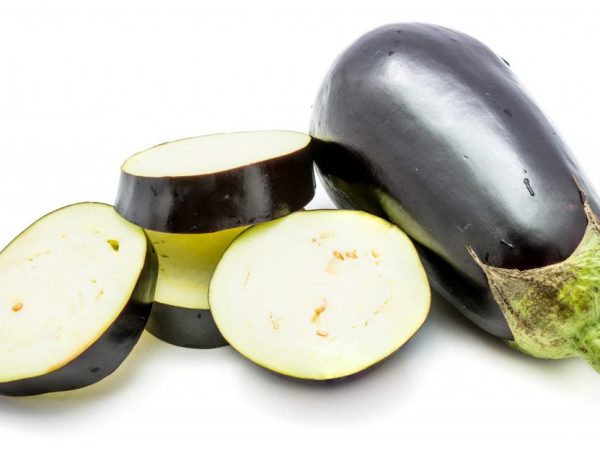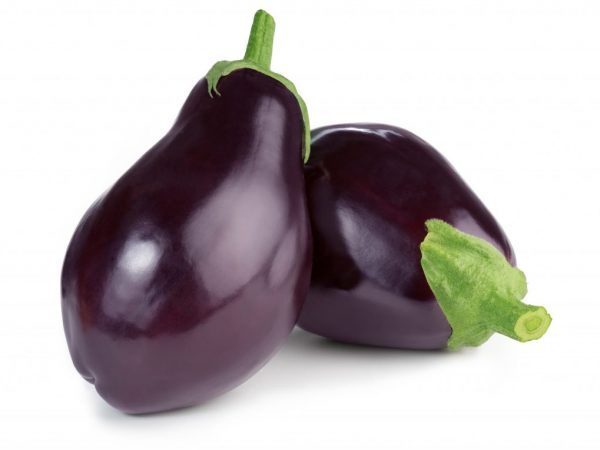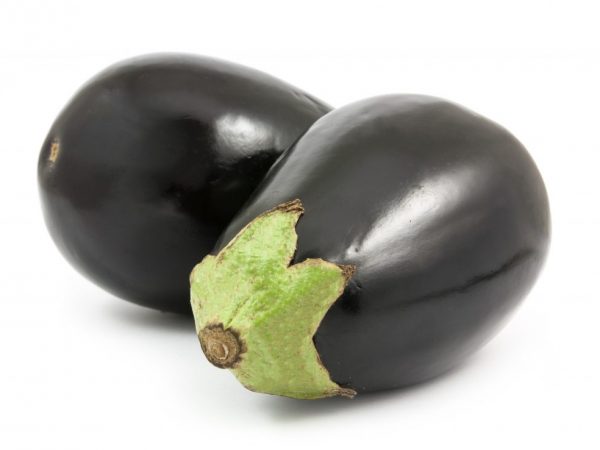Description of Epic eggplant
Eggplant is a whimsical nightshade plant, therefore, when growing such a crop, it is necessary to carefully study the description of the various varieties. The Dutch eggplant hybrid Epic F1 received positive reviews. Thanks to selection, Epic F1 eggplant has a high yield and endurance, therefore it is grown not only in the southern regions, but also in a harsh climate.

Description of Epic eggplant
Characteristics of the variety
The eggplant variety Epik is early maturing, the growing season is 65 days, in some cases - 80. The newly bred hybrid is intended for outdoor cultivation in subtropical climates. In a temperate climate, it bears fruit well in a greenhouse. Proper care allows you to collect about 6 kg from 1 sq. M.
Description of the bush
The erect, spreading, powerful bush of the plant reaches a height of about 1 m. The medium pubescent green stem can be purple, red and blue. Small leaves are bright green. For the formation of a bush and a good yield, the plant requires a garter. Weak ovaries must be removed.
Description of fruits
The Epik variety received high commercial characteristics due to its large, cylindrical fruits. On average, one fruit weighs 200 g, reaches 22 cm in length and 10 cm in width. Depending on the soil, growing conditions, climatic characteristics, fruits can reach larger sizes. They are mostly dark purple in color with a glossy skin. The sepals sometimes have thorns. Dense structure of white flesh with few seeds.
The fruits are distinguished by pleasant taste characteristics. The variety is characterized by a lack of bitterness and a pronounced aroma. Vegetables of the Epic variety are used in cooking both freshly prepared and canned, suitable for frying, stewing, cooking caviar. The fried Epic fruit tastes like mushrooms.
Growing eggplants

Eggplant grows well in a greenhouse
In order for the seedlings to form, the seeds are planted in mid-March in warm soil, it is better if it is a greenhouse.
Seed preparation
Before sowing, the planting material must be disinfected. To do this, it should be placed in a 2% solution of potassium permanganate for 20 minutes. Then rinse the seeds in clean boiled water, dry and soak for a day in a growth stimulator. There is another disinfection method - for 10 minutes, place the planting material in a 3% hydrogen peroxide solution, heated to a temperature of 40 ° C.
As a growth stimulant, three-year-old aloe juice is used in pure form, or mixed in equal proportions with water. Seeds are spread on a saucer, filled with juice for a day, dried and proceeded to planting.
Planting seeds
As a soil, they use a ready-made substrate or make a substrate on their own.The soil from the summer cottage is cleared of weeds and mixed in equal parts with sand and soil for indoor plants. You can also use peat mixed with sawdust and seedling soil.
Eggplants prefer loose, light soils rich in minerals and organic compounds.
In densely packed peat or plastic pots or any other container, moisten the substrate abundantly, sow the seeds and cover with a layer of soil no more than 1 cm. Wrap the container in a transparent film and place in a warm place for germination.
Seedling care
Solanaceous seedlings require careful maintenance. The room temperature should not exceed 25 ° C. The first shoots will appear within 10 days. After that, remove the film and lower the temperature to 18 ° C. Within two weeks after germination, the temperature should be raised to 28 ° C during the day and lowered to 15 ° C at night. This will help harden the seedlings.
After a while, using a phytolamp, it is necessary to increase the daylight hours to 12 hours. The light source is placed at a distance of 50 cm.
The soil must be constantly moist. 3 days after sowing, the first watering is carried out, then every five days. If the soil is not enriched with minerals, then a week after germination it should be fed with a phosphorus-containing fertilizer. Then, once every 7 days, apply top dressing to build up green mass.
Planting seedlings in the ground
The formed strong seedlings with a height of 20 cm should have at least 5 leaves. At the end of May, when the daytime temperature rises above 15 °, the eggplant seedlings are transplanted into open ground.
The soil should be slightly alkaline or neutral. Acid must be neutralized with limestone at the rate of 0.5 kg / m².
Eggplants are recommended to be planted in areas where beans, peas, cabbage, garlic, onions, herbs grew before. Unfavorable predecessors - peppers, potatoes, tomatoes.
Each hole more than 10 cm deep is moistened with warm water and one sprout is planted. The distance in the row spacing should be at least 65 cm, between the bushes - 35 cm.
Watering

You rarely need to water, but a lot
Compliance with soil moisture is an important characteristic in growing seedlings. Watering should be carried out once a week, more often in hot weather. Abundant moisture will lead to rotting of the root system. Eggplants are watered with settled warm water. During the period of active growth of fruits, watering must be carried out daily.
After each moistening, the soil should be loosened for better oxygen access to the roots. It is also recommended to mulch with straw mixed with onion and garlic peels. This helps to retain moisture and reduce weed growth, and also repels some pests.
Top dressing
The first feeding of plants is carried out two weeks after planting in the ground. To do this, use ammonium nitrate with superphosphate and potassium sulfate. It is also recommended to add 40 g of potassium-phosphorus fertilizer and 50 g of nitroammofoska.
During the growing season, to increase the ovary, the soil is fed with humus, compost, sawdust or rotted cow manure at the rate of 1 bucket per 1 m².
During the formation of fruits, a phosphate-nitrogen mixture is used - 1 tsp each. Stir superphosphate and saltpeter with 10 liters of water.
Throughout the entire growing period, no more than 5 dressings should be made.
Harvesting
According to the description of the variety, the technical ripeness of the fruits occurs 25 days after flowering, which means that in August Epic eggplants will delight with the first harvest. Harvesting is carried out every 3 days, as the product ripens gradually. The stalk is recommended not to break off, but to be cut off with a pruner. This will reduce stress on the plant and ensure that the remaining fruit ripens properly.
It is important not to let the eggplant over-ripe. The pulp will lose its elasticity, become tough and too bitter.
Fresh fruits of the Epic variety are stored for no more than three weeks. But there are several rules that will help preserve the fetus for 2-3 months:
- wipe each eggplant dry;
- put vegetables in one layer in a cool room;
- reject the spoiled every three weeks;
- Wrap the remaining fruits in paper, put them on straw in one layer and cover with burlap.
Diseases and pests
Epic eggplants are resistant to the tobacco mosaic virus, but are susceptible to diseases such as:
- Late blight;
- Bacterial spotting;
- Blackleg;
- Gray rot.
Already 3 weeks after the appearance of full-fledged shoots, prophylaxis with Bordeaux liquid, cuproxate, copper sulfate, Zircon should be carried out. A few days after planting in the ground, the procedure should be repeated.
Pest control
Pests dangerous for eggplant:
- Colorado beetle;
- Spider mite;
- Scoop;
- Aphid;
- Medvedka;
- Slugs.
Colorado beetles and slugs can be hand picked. To scare off beetles, it is recommended to sow marigolds and basil next to the beds. A mixture of tobacco dust, ash and lime will help in the fight against slugs. Treatment with Keltan or Arrow will relieve the spider mite. A solution of wood ash will protect plants from aphid attack.
Prophylaxis
To prevent infection with various diseases, the rules of crop rotation should be observed and agrotechnical measures should be carried out regularly. Chemical processing should be carried out only by means that are safe for humans and plants.
Conclusion
The Epic F1 eggplant hybrid is the choice of many gardeners. Careful and timely care will allow you to get an early harvest of high-quality fruits.


